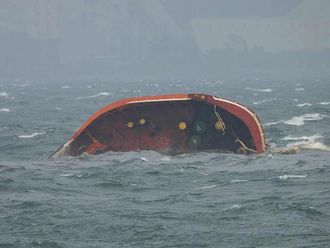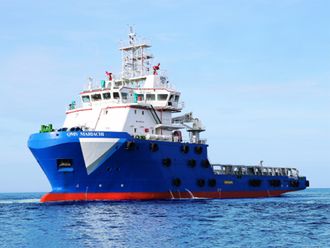International venture Tengizchevroil will invest $2 billion until 2005 as part of an ambitious expansion plan for the giant Tengiz oilfield in Kazakhstan, the company's general director said at the weekend.
The 40-year venture, which unites Chevron (50 per cent), Kazakhstan (20 per cent), ExxonMobil (25 per cent) and Lukarco (five per cent), has already spent an estimated $2 billion since 1993 on developing Tengiz in northwestern Kazakhstan. But this appears to be just the beginning.
"We will invest an additional $2 billion in implementing major stages of the expansion within the 2005 time frame," Tom Winterton, Tengizchevroil general director, told a news conference in Kazakhstan's oil capital Atyrau.
Winterton said the plan aimed to boost the annual capacity of Tengiz's crude fractionation plant by seven million tonnes. The processing plant can now handle 12 million tonnes a year which roughly corresponds to the venture's crude output.
He said the venture also planned to start reinjecting sour gas into the Tengiz reservoir which would allow it to boost oil output due to the increased pressure in oil wells. "This technology means a great deal of opportunity for us," Winterton said. He said the venture was producing about 290,000 barrels per day (bpd), or 260,000 bpd on an average annual capacity basis.
"The ultimate productive capacity of the field may be 700,000 bpd by the end of the decade, and we do not see that as being an unrealistic expectation," Winterton said. "Tengiz is still pretty much in its infancy."
Industry officials say Tengiz, located in a windswept desert, is the world's deepest super giant oilfield and probably the largest oil find in the last three decades. They say Tengiz sits on an oil column about one mile thick and has recoverable reserves of six to nine billion barrels.
Winterton said the pipeline route from Tengiz to terminals in Russia's Black Sea port of Novorossiisk, built by the Caspian Pipeline Consortium (CPC), is a major boon for the venture and will make it more cost-effective. Oil started to flow through the CPC pipeline in March, and officials say the crude will reach Novorossiisk in early August.
"We've reached the point of very viable economic activity, particularly with the CPC pipeline, which should be generating a significant amount of cash, even when oil prices are at a reasonably low level," he said.
He declined to say how much the venture would be saving in costs because of the launch of the CPC, but referred to media reports saying that an average saving rate might be $25 per metric tonne. "That's a substantial saving," he said.
He said Tengizchevroil was now shipping some 70 per cent of its crude by rail, and with the CPC becoming operational the venture might use its railway to ship liquid petroleum gas and sulphur, produced by the plant, to world markets.
He said Tengizchevroil was showing high profitability but declined to give details. "World-class production cost is put in the neighbourhood of $3 per barrel," he said. "If you are in a $2 or $3 per barrel operating expense range, you are among the most efficient operators in the world, and we are within this range."
Winterton said Tengizchevroil paid over $500 million in taxes and royalties to Kazakhstan's government last year. Another $200 million went on equipment and services from Kazakh companies.
Tengizchevroil heralds expansion in Kazakhstan
International venture Tengizchevroil will invest $2 billion until 2005 as part of an ambitious expansion plan for the giant Tengiz oilfield in Kazakhstan, the company's general director said at the weekend.












